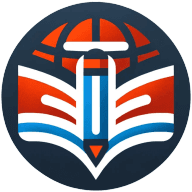6 Surprising Teaching Methods that Work for Difficult Concepts
Educators are constantly seeking innovative ways to tackle challenging subjects in the classroom. This article explores six surprising teaching methods that have proven effective for difficult concepts, backed by insights from experts in the field. From visual problem breakdowns to neurolinguistic approaches, these techniques are transforming how students engage with and understand complex material.
- Visual Problem Breakdowns Boost Student Comprehension
- Interactive Molecular Visualization Enhances Chemistry Learning
- Kinesthetic Learning Transforms Abstract Concepts
- AI Chatbots Revolutionize Language Practice
- Bar Modeling Builds Strong Mathematical Foundations
- Neurolinguistic Approaches Personalize Complex Lessons
Visual Problem Breakdowns Boost Student Comprehension
One teaching method that really surprised us with its effectiveness was using visual problem breakdowns for topics students usually struggle with, such as multi-step math problems or abstract science concepts. Instead of moving straight into solving, our tutors guide students to map out each step visually with diagrams, color coding, or flow charts. What seemed like a simple shift turned out to make a huge difference in helping students organize their thinking and see connections they might otherwise miss.
We adapted this to our tutoring sessions by making it interactive. Students are encouraged to build the visual breakdowns themselves rather than just following along. This way, they take ownership of the process and can recreate it independently when studying. The result has been stronger comprehension, more confidence tackling complex problems, and fewer students feeling overwhelmed when they see a challenging question.

Interactive Molecular Visualization Enhances Chemistry Learning
Using MolView as an interactive molecular visualization tool was surprisingly effective for helping students grasp complex molecular structures that are traditionally difficult to comprehend from static textbook images. The ability to rotate molecules in real-time and visualize orbital overlaps provided students with a dynamic understanding that static teaching methods simply couldn't achieve. I adapted this approach by creating guided exploration worksheets that directed students through specific structural features while still allowing them freedom to manipulate the models independently. The impact was immediate - concepts that previously required multiple review sessions were understood in a single class period, particularly benefiting visual learners who struggled with abstract chemical principles.

Kinesthetic Learning Transforms Abstract Concepts
One of the teaching strategies that entirely changed the way I handle touchy subjects is kinesthetic learning, or learning by doing. Abstract concepts don't come easily to most students, particularly in math and the sciences. I realized that once I exchanged lengthy orations with movement-based, hands-on exercises, their comprehension significantly improved.
Kinesthetic Learning in Action:
Take the "simple machines" lesson as an example. Rather than teach about levers and pulleys on the board, I transformed the classroom into stations. Students worked with common materials to construct, test, and experiment with the machines. Rotating through each station, they didn't merely learn about the ideas; they saw and handled them in practice. Switching from the passivity of listening to the hands-on nature changed the lesson so that it would stick and even created excitement.
Modifying It for My Pupils:
I structured each activity to be flexible, so that each kid could access it, whether they required extra support or needed that little bit more extension. Working together also fostered collaboration, where kids automatically explained their thinking to each other and gained confidence throughout. Brief check-ins following each activity provided me with a sense of where they were, so I could make adjustments to subsequent lessons. The end results were obvious: increased student engagement, improved conceptual understanding, and improved problem-solving skills across the board.
The largest takeaway? When kids move, build, and try, the learning becomes real. That small shift still dictates the way I teach daily.

AI Chatbots Revolutionize Language Practice
Implementing AI chatbots in my Spanish classroom last fall proved surprisingly effective for helping students practice conversational skills, which is typically a challenging area for language learners. The chatbots allowed students to engage in personalized practice at their own pace, removing the anxiety many feel when speaking a new language in front of peers. This technology not only improved student engagement but also created more opportunities for authentic conversations during class time as students gained confidence. I made sure to integrate lessons on responsible AI use alongside the language practice, preparing students with digital literacy skills while improving their Spanish proficiency.

Bar Modeling Builds Strong Mathematical Foundations
As a mathematician and educator, I've discovered a deceptively powerful technique called Bar Modeling, the cornerstone of the globally successful Singapore Math curriculum. While typically taught in elementary school, this visual method is instrumental in building a deep conceptual bridge from simple arithmetic to advanced topics like ratios, proportions, and simultaneous equations in algebra.
The core of the technique is simple: A quantity is represented by a drawn bar. A longer bar represents a larger quantity relative to a shorter one. My initial impression was skeptical--wasn't this just replacing the variable "x" with a drawing? However, after exploring problems like the one below, I recognized its true power: it gives students a deep conceptual understanding of mathematical relationships, rather than just memorizing algebraic manipulations.
Students using bar modeling don't just learn how to solve for x; they visually and structurally understand why the manipulation works, setting them up for greater success when they later transition to formal algebra.
Illustrative Example (4th Grade Singapore Math)
This problem, which typically requires a system of three simultaneous equations in algebra, is elegantly solved using bar models:
Problem: Tank A and Tank B contain 1,248 gallons of water. Tank B and Tank C contain 998 gallons of water. Tank A and Tank C contain 1,114 gallons of water. How much water is in each tank?
Solution via Bar Modeling: The model allows students to visualize the overlapping quantities and relationships, leading them to the answer directly.
Answer: Tank A = 682 gallons, Tank B = 566 gallons, Tank C = 432 gallons.
I'd be happy to share my full analysis of Bar Modeling's effectiveness, discuss how it can improve math literacy, and walk you through several examples that demonstrate its powerful application in various areas of mathematics. This isn't just about elementary school math; it's about a revolutionary way to teach mathematical structure.
Neurolinguistic Approaches Personalize Complex Lessons
Identifying individual learning styles through neurolinguistic approaches has been remarkably effective for teaching concepts students typically find challenging. After attending specialized workshops, I began creating tailored classroom activities that address visual, auditory, and kinesthetic learning preferences when introducing complex material. This personalized approach not only improved student comprehension but also significantly increased engagement during difficult lessons. The key adaptation was ensuring each lesson incorporated multiple learning modalities rather than relying on a single teaching method.


